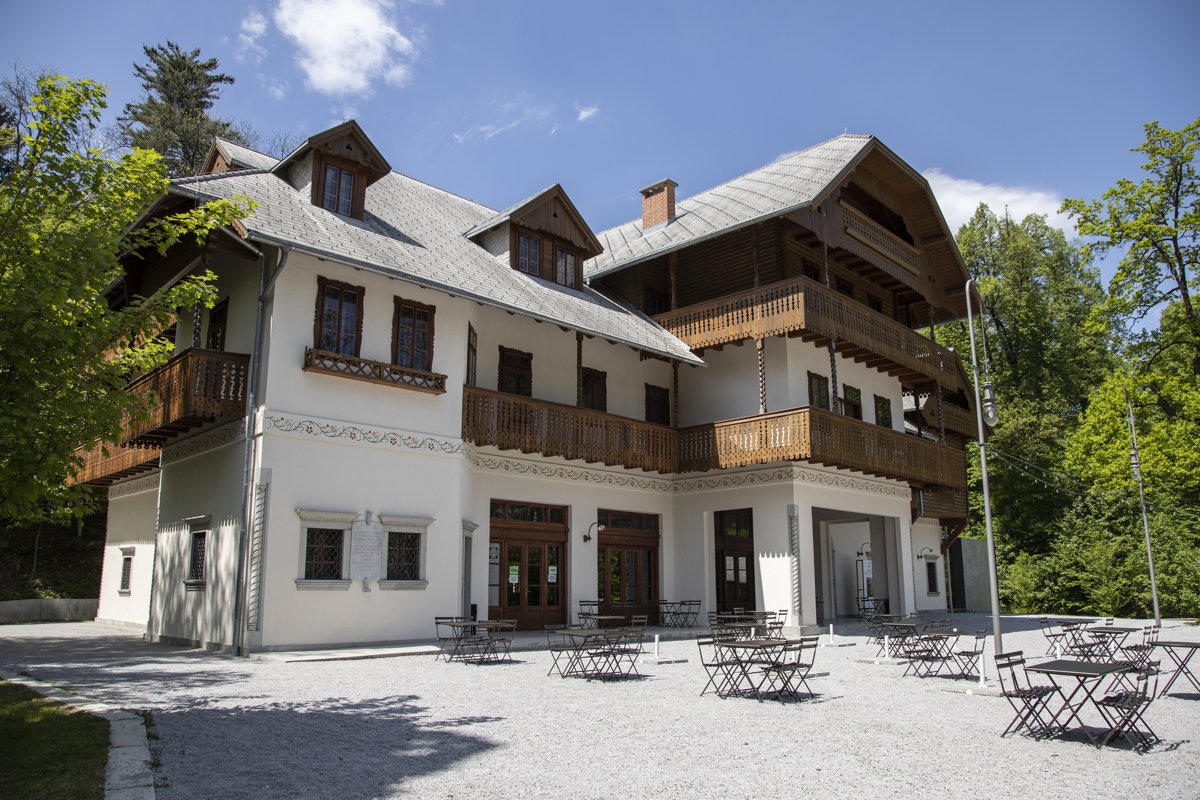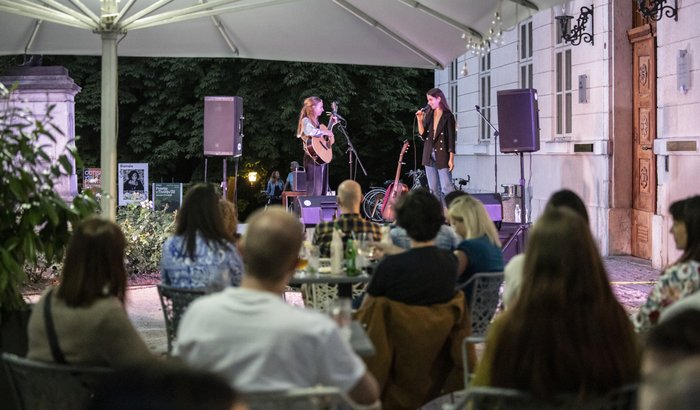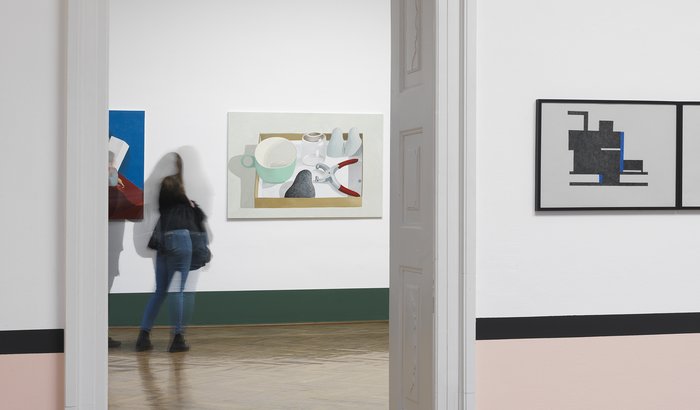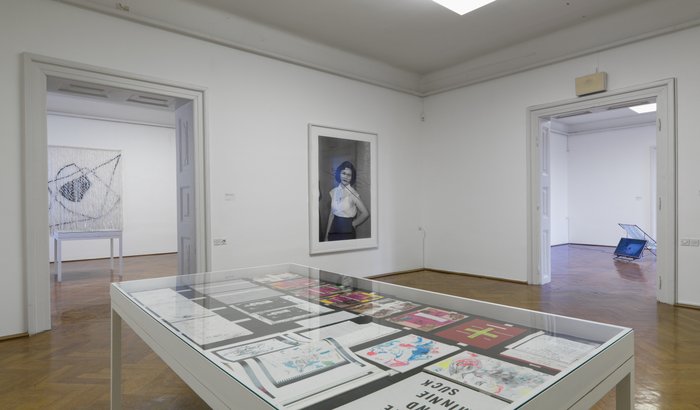From a Wooden Inn to a Contemporary Creative Centre

The International Centre of Graphic Arts took Švicarija into its care on 9 May 2017, thus expanding the spatial possibilities and developing the programme of the founding institution.
The renovated building hosted the 32nd Biennial of Graphic Arts in 2017, and the first artists moved into the art studios at the end of the year. The exhibition project Švicarija: Community, Art and Nature (8. 2. 2018–6. 1. 2019) updated the history of the building to the present day and set the guidelines for the future: to connect community, art and nature. Our vision is based on an understanding of the socio-historical contexts in which Švicarija took on different roles. From the historical perspective, it can be seen as a space of hospitality, coexistence, exchange and transformation. By considering the needs of today, Švicarija continues to uphold and develop these ideas and values.
MGLC Švicarija is thus becoming an international residency centre and support for cultural mobility, a centre for production and creativity, a centre for knowledge exchange and a model for the revitalisation of cultural heritage. The international residency programme, cultural and art programme (exhibitions, events, expert meetings, cultural education), the art studios and the outstanding cultural heritage with the Stojan Batič Memorial Studio encourage the flow of knowledge and experience between artists and visitors. We address the audience with new ways of presenting the graphic medium and contemporary art in connection with the community and nature.
The location of the building in Tivoli Park and at the foot of Rožnik gives our ambitions and desires a sustainable and ecological character. MGLC Švicarija is a house with open doors – because, at the crossroads between Tivoli Mansion and Švicarija, Ljubljana's new cultural, educational and social centre is being born.
Community, Art and Nature
The year-round project Švicarija: Community, Art and Nature (author of the project: Yasmín Martín Vodopivec) has outlined the content guidelines of the mission of the renovated Švicarija, linking art and culture with current social questions, ecology, environmental issues and the community of people in solidarity. In 2019, the International Centre of Graphic Arts was awarded the Živa Prize for its holistic project, especially for its openness and attention to visitors. The prize is awarded by the international organisation Forum of Slavic Cultures and the project was selected from twenty-five finalists from Slavic countries. We are increasingly becoming a model of an inclusive and multidisciplinary institution that also intervenes in the public space and surroundings of Tivoli Park. Our engagement is socially critical, capable of reflection on the phenomena of the present time as well as self-reflection on our own actions.
Historical outline of the building
In 1835, the Casino Association of Ljubljana opened a place of amusement with a guest house for its members on the hillock above Tivoli Mansion. Between 1852 and 1856, the Austrian Field Marshal Joseph Radetzky lived in the mansion. He had the surroundings landscaped and a Swiss-style house, called Schweizerhaus, or Švicarija, built beside the existing guest house. The guest house was much loved by the inhabitants of Ljubljana and foreign visitors, even though at the beginning of the 20th century the building no longer met the modern requirements for a guest house. On the initiative of the hotelier Ivan Kenda, the then tenant of Švicarija, Mayor Ivan Hribar proposed to the City Council the construction of a new guest house. When Švicarija was demolished in 1908 and Tivoli Hotel was built in its place according to the plans of the architect Ciril Metod Koch, various Slovenian clubs and associations found a place for meetings and social gatherings there. The hotel soon became a meeting place for Ljubljana's citizens, artists and bohemians, and on 1 May, also for workers. Ivan Cankar, who also lived in the former Tivoli Hotel in the winter of 1909/1910, Vladimir Levstik, Ivan Lah, Cvetko Golar, Anton Verovšek, Hinko Smrekar, Maksim Gaspari, Viktor Zalar, as well as others, met in the 'peasant room'.
In the 1930s, Russian war fugitives were accommodated in the rooms and arranged them into modest apartments. Before the Second World War, a seminal moment occurred in the former Tivoli Hotel. The sculptor Ivan Zajec, the creator of the Prešeren monument at the Triple Bridge, set up a studio in one of the rooms. After the end of the Second World War, many prominent Slovenian sculptors followed suit, and Švicarija became known as the cradle of post-war Slovenian sculpture. In the wake of the situation, the slowly collapsing and overgrown building became a refuge for the most diverse groups of people, who breathed new life into Švicarija. Despite the many aggravating circumstances and the diverse individual fates of its inhabitants, the peculiarity of the hotel building enabled the formation of a community through an unexpected succession of users. This gave the building meaning and ensured its continued existence to this day.
In 2008, the City of Ljubljana decided to revive the hidden gem in the middle of the forest, return it to the citizens and establish a lively artistic and social centre there. And so began the lengthy process of finding nineteen replacement apartments for the residents and eight studios for the artists who created there. At the same time, the preparation of the documentation took place, which had to follow the new programme guidelines of Švicarija with spaces for public programmes and art studios, as well as the quality restoration of the cultural monument. The renovation of the building lasted until May 2017, when the construction and finishing works were completed, followed by orders for the supply and installation of furniture and fittings. The building was then handed over to the management of the International Centre of Graphic Arts.
Cultural monument
MGLC Švicarija is a protected monument. In 2013 it was granted the status of a cultural monument, and the Stojan Batič Memorial Studio Collection housed on the ground floor of the building received the same recognition in 2022.
Essays




